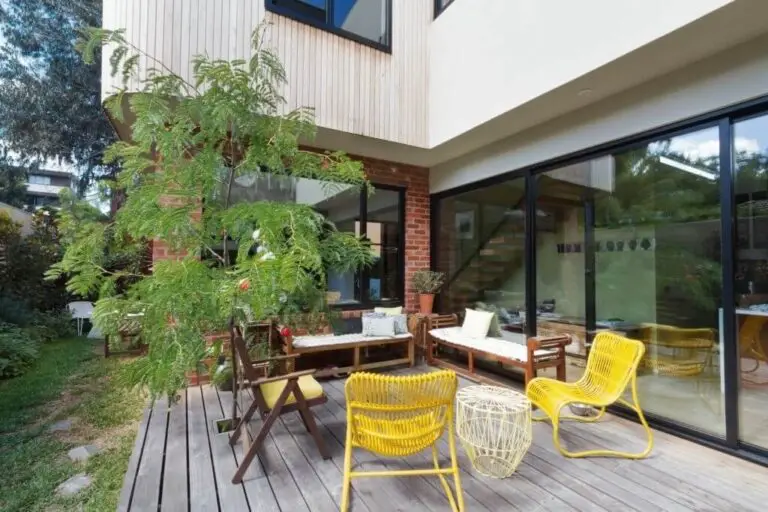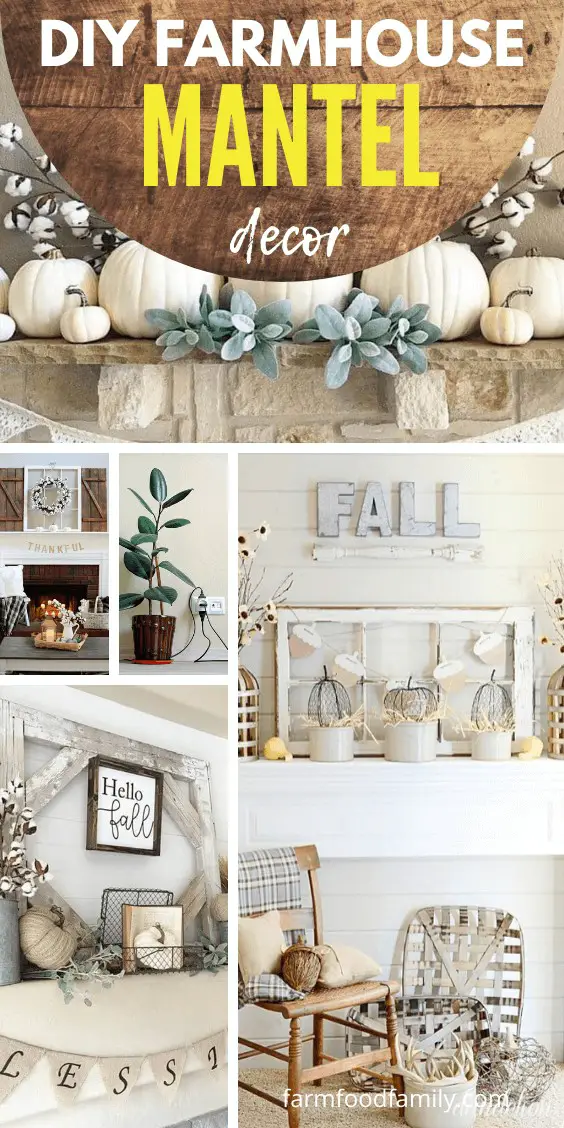20+ Different Types Of Hot Tubs, Features, And Shapes (Buying Guide)
Hot tubs have become synonymous with luxury and relaxation, thanks to the soothing combination of air and water jets. While many people associate them with indulgence, there are actually numerous types of hot tubs that cater to various needs and budgets. As you navigate the market, it’s essential to consider your requirements and preferences to find the perfect fit. This article aims to provide a comprehensive overview of hot tubs, including their features, shapes, energy ratings, and more.
Whether you’re looking for a portable option or a luxurious in-ground installation, this guide will help you narrow down the best hot tub type for your needs. From inflatable to wooden designs, there are many options to choose from. You’ll also learn about the various features that can enhance your hot tub experience, such as cooling capabilities, lights, and massaging jets.
Whether you’re looking to unwind after a long day or enjoy some quality time with family and friends, this article will provide valuable insights to help you make an informed decision. So, what are the benefits of hot tubs? Who should avoid them? And how can you maximize your experience? This comprehensive guide has got you covered.
What is a hot tub?
Hot tubs are not a recent discovery, having been around since ancient times when they resembled large bathing vats or public indoor bathtubs. Today, hot tubs serve as a means to unwind and socialize, offering self-contained, above-ground, in-ground, or portable options. The primary function of hot tubs is to provide deep soaking relaxation and hydrotherapy benefits.
These versatile vessels can be tailored to individual needs with various built-in features and come in diverse styles, finishes, shapes, and sizes.
Hot tub vs spa
While it’s natural to assume that hot tubs are more laid-back and geared towards casual relaxation, the reality is that they’re often used interchangeably with spas. In fact, both terms refer to in-ground, custom-made or portable tubs designed for wellness and unwinding. One key distinction between hot tubs and traditional bathtubs or jacuzzis is their ability to retain water temperatures more effectively, allowing for instant deep soaking and relaxation.
Another notable difference is their larger size compared to standard bathtubs and jacuzzis, making them ideal for sharing with friends and family or enjoying a solo retreat.
Types of hot tubs
When contemplating the purchase of a hot tub, it’s natural to feel overwhelmed by the sheer variety of options available. With so many factors to consider, including color, shape, style, and feature sets, it can be daunting to narrow down the choices. However, understanding the main types of hot tubs on the market can help simplify the decision-making process.
Custom made
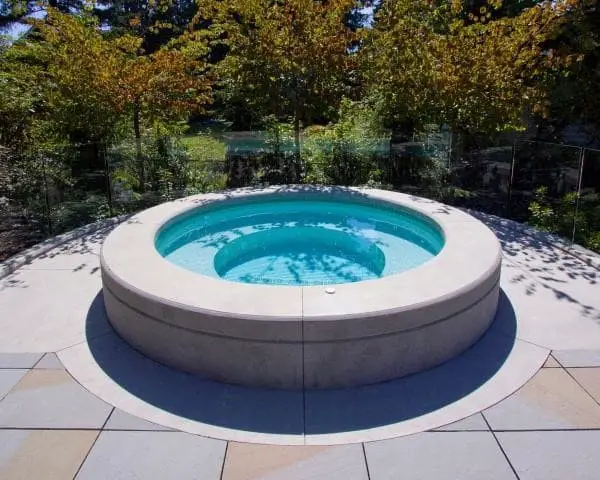
When all other options don’t quite align with your preferences, custom-made hot tubs offer an unparalleled level of customization. With varying price ranges dependent on factors like style, size, shape, and added features, you’re able to tailor the experience to your unique tastes and needs. This personalized approach ensures that every aspect is tailored to fit your individual preferences, resulting in a truly exceptional and rejuvenating experience.
Inflatable
When it comes to hot tubs, one of the most sought-after options is the inflatable variety. This type of hot tub offers a unique combination of benefits, including being easy to maintain, handle, and own overall. Its lightweight and portable nature makes it an ideal choice for those who want the flexibility to move their hot tub around or take it with them on vacation.
The materials used to construct these hot tubs are often polyester or laminated PVC, which provides a durable and long-lasting structure. What’s more, inflatable hot tubs come in a range of colors, shapes, and sizes, allowing buyers to customize their purchase to suit their personal preferences.
One of the standout features of inflatable hot tubs is the simplicity of setup – unlike traditional electric hot tubs that require extensive wiring and installation, inflatable hot tubs only need 110V power to get started.
In-ground
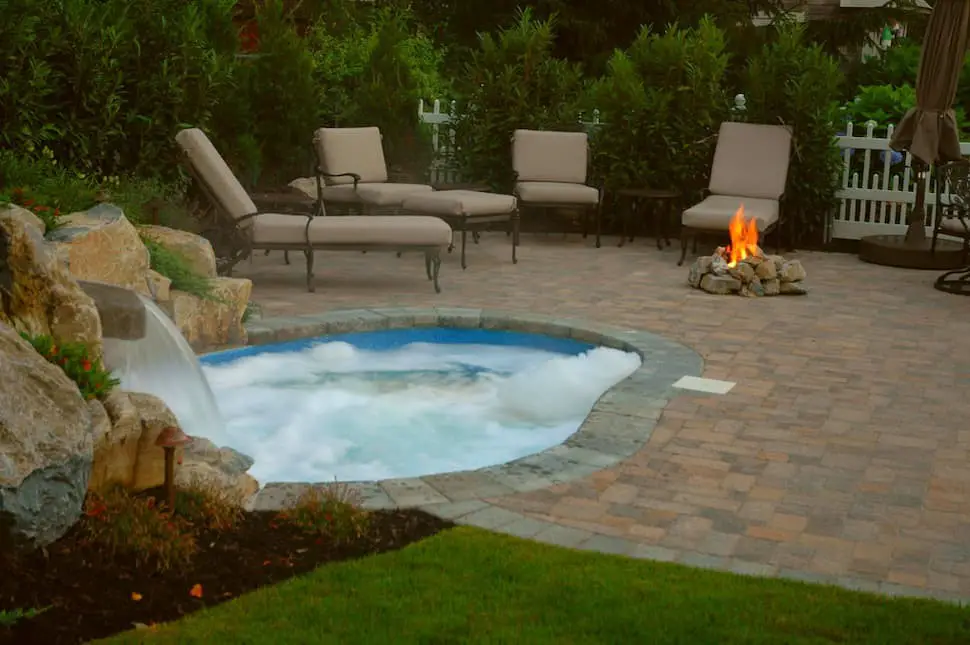
In-ground hot tubs are often integrated seamlessly with swimming pools, creating a continuous, exterior pool-like experience. When it comes to construction, these types of hot tubs typically require permits. On the plus side, they offer high levels of customization when it comes to style, appearance, shape, and added features. However, homeowners should be prepared for both installation costs and ongoing operation expenses.
Portable
While Amazon offers an extensive selection of hot tub options, portable models stand out for their versatility and affordability. These versatile vessels excel in terms of configuration, shape, and size variety, making them the most popular choice among hot tub enthusiasts. Furthermore, they are often more budget-friendly compared to other types.
The advent of portable hot tubs can be traced back to a response to wooden hot tubs, which were limited by their durability and energy consumption issues. In contrast, modern portables boast energy efficiency, impressive weight capacity, and ease of relocation and storage, making them an attractive option for those seeking a convenient and practical soaking experience.
Rotationally molded
For those seeking a hydrotherapy hot tub that won’t break the bank, this option is an excellent choice. While not as portable as inflatable alternatives, these tubs still deliver on durability, design, and functionality. Their contoured seating provides unparalleled comfort, while their ease of movement allows for flexible placement within your desired space.
Constructed from a single piece of durable plastic and featuring a molded shape, this hot tub offers an unbeatable blend of form and function.
Soft-sided
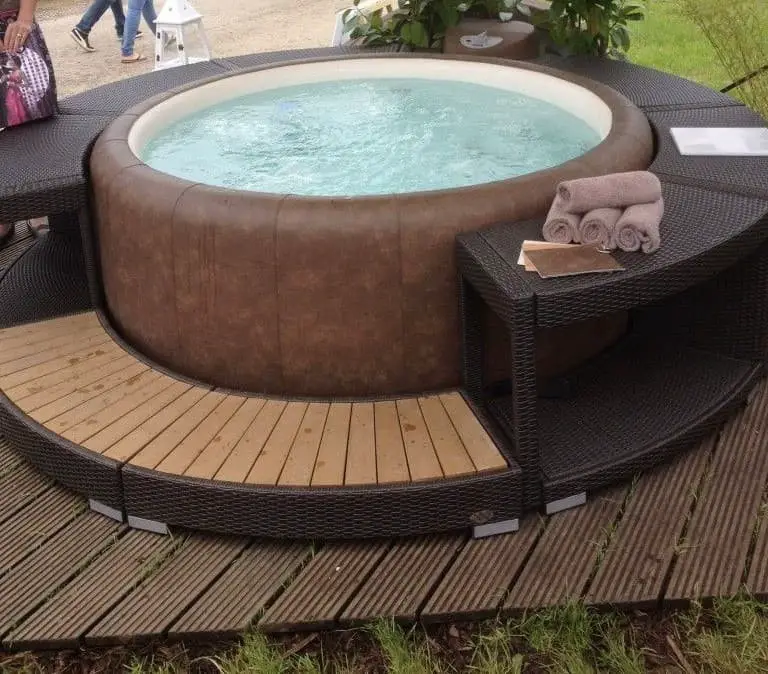
While often mistaken for inflatable hot tubs, soft-sided hot tubs are actually distinct products. Like their inflatable counterparts, they may require a 110V outlet connection, but the similarities largely end there. These portable hot tubs are commonly found at fairs, booths, and online marketplaces, touting affordability as one of their key selling points.
However, buyers should be aware that soft-sided hot tubs often compromise on comfort and durability in order to achieve a lower price point.
Swim or exercise spa
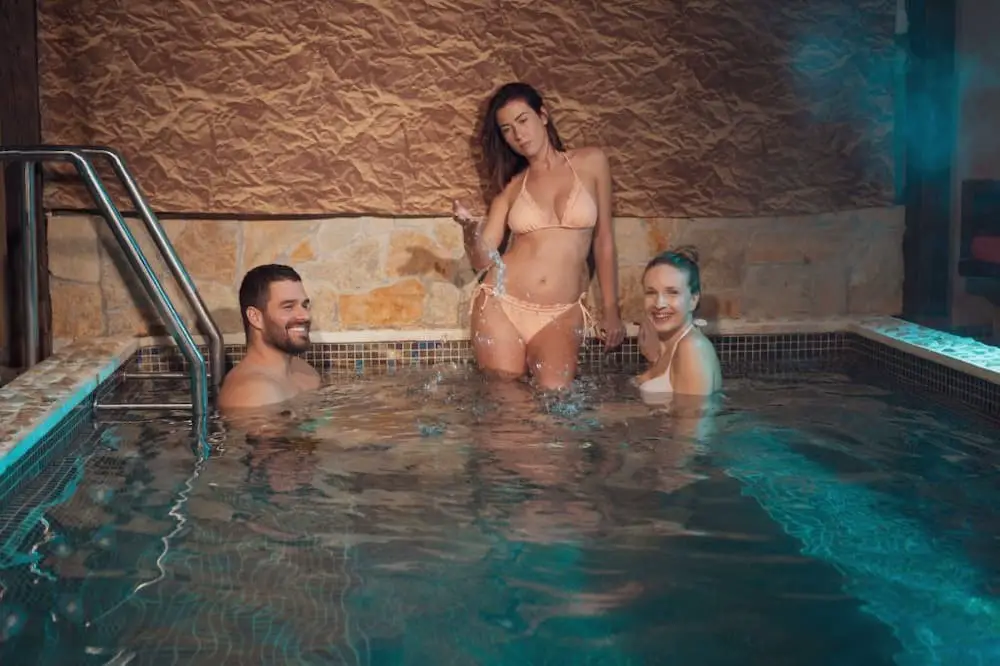
For those seeking a premium hot tub experience that combines hydrotherapy, deep soaking, and exercise sessions in one luxurious package, this option warrants serious consideration. Its generous size permits swimming and exercise, necessitating a stable platform for semi-permanent placement. While this choice offers many benefits, it also presents some drawbacks. A significant concern is its bulkiness, which may pose logistical challenges.
Additionally, the operating costs are higher due to the need for large amounts of water and advanced features, making it a more expensive option overall.
Wood fired
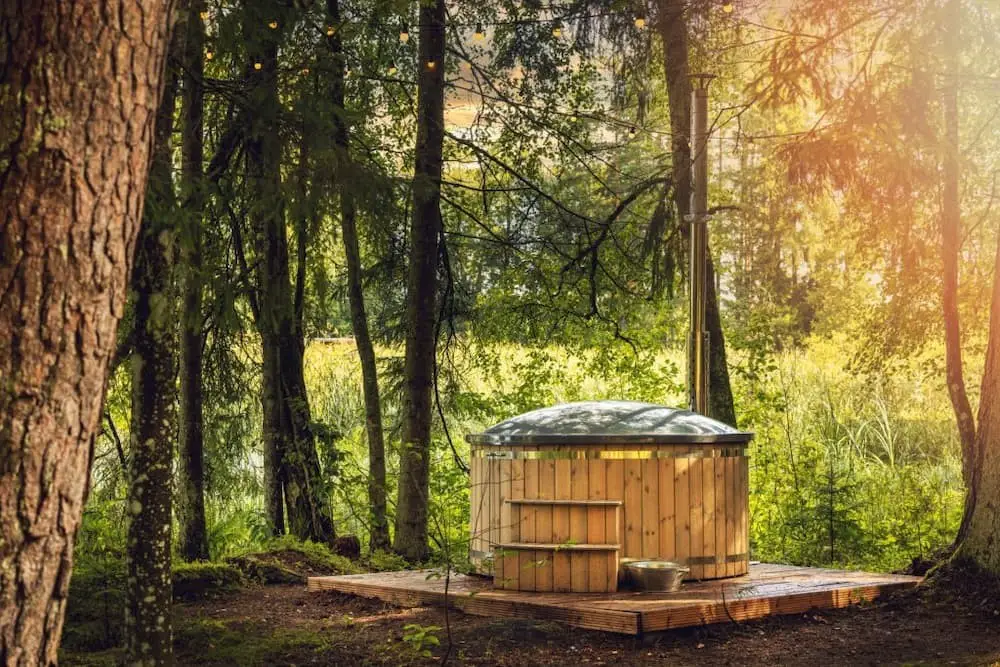
Embracing a serene atmosphere reminiscent of rustic getaways or exotic spa retreats, wood-fired hot tubs offer a unique relaxation experience. Unencumbered by the need for electricity, these moveable tubs provide an intimate connection with nature. While the allure of a warm soak is undeniable, it’s essential to consider the location carefully, as the heating source relies on literally fired wood.
Additionally, factors such as preparation time and potential disruptions mid-bath must also be taken into account.
Wooden
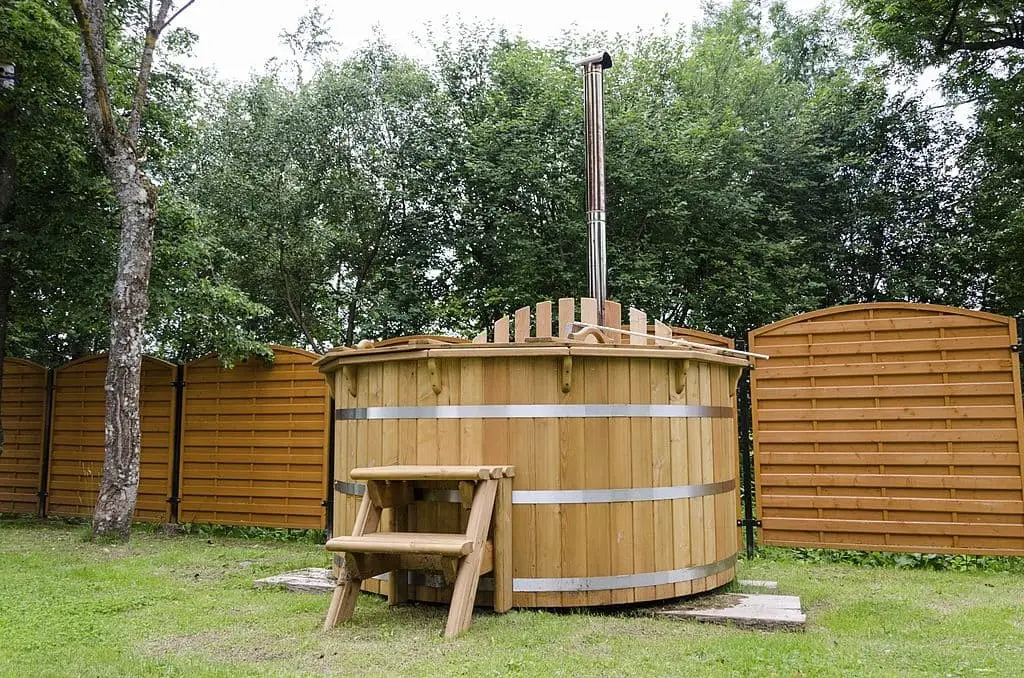
Wooden hot tubs mark the beginning of hot tub evolution, characterized by repurposed wooden barrels resembling large vats. The heat source is a crucial aspect, with options including gas heaters, electric heaters, and hybrid combinations. Although their design may be considered rudimentary compared to modern standards, these rustic hot tubs still find relevance in Asian-inspired spas, often incorporating elements like concrete or tile inlays to enhance the experience.
Features
While understanding the various types of hot tubs is crucial, it’s equally important to consider their features when making a decision. The characteristics of a hot tub often outweigh its aesthetic appeal. As such, here are some fundamental features that deserve attention when selecting the ideal hot tub:
Cooling capabilities
For those seeking a year-round hot tub experience, the ability to regulate water temperature through built-in cooling or heating is an attractive feature. This luxury is not typically found in most hot tubs. As such, if this feature is a top priority, it’s essential to start your search for a hot tub that offers this capability. That being said, it’s crucial to consider the associated costs, both upfront and in terms of increased electric bills.
Cover
When it comes to maintaining a clean and functional hot tub, a high-quality cover is an indispensable asset. Not only does it protect the tub from unwanted intruders like insects, leaves, and debris, but it also plays a crucial role in regulating the temperature of the water. This is particularly important if your hot tub isn’t situated in a shaded area, as direct sunlight can cause the water to heat up rapidly.
By investing in a reliable cover, you’ll not only reduce the likelihood of dirt and grime accumulating on the surface, but you’ll also lower your operating costs over time. While some hot tubs may come with covers included, many manufacturers sell them separately, making it essential to factor this into your overall budget.
Drink holders
Indulge in the ultimate relaxation experience with Amazon’s innovative features. The soothing music and warm waters of your hot tub are elevated by the clever design of built-in or detachable drink holders, available for both permanent and portable hot tubs. Imagine sipping your favorite beverage while immersed in a serene soak – it’s the perfect way to unwind and rejuvenate.
Lights
Experience the transformative power of color-changing lights in your hot tub, courtesy of Walmart’s innovative offerings. The integration of LED lights into hot tubs creates a distinct and rejuvenating experience that can be tailored to suit individual preferences. Not only do these illuminated hot tubs amplify their therapeutic benefits, but they also provide an inviting atmosphere for kids, fostering more family bonding moments while enjoying the relaxing effects of hydrotherapy.
Moreover, well-lit hot tub areas that would otherwise lack ambiance are transformed by the soft glow of LED lights, creating a cozy retreat.
Massaging jets
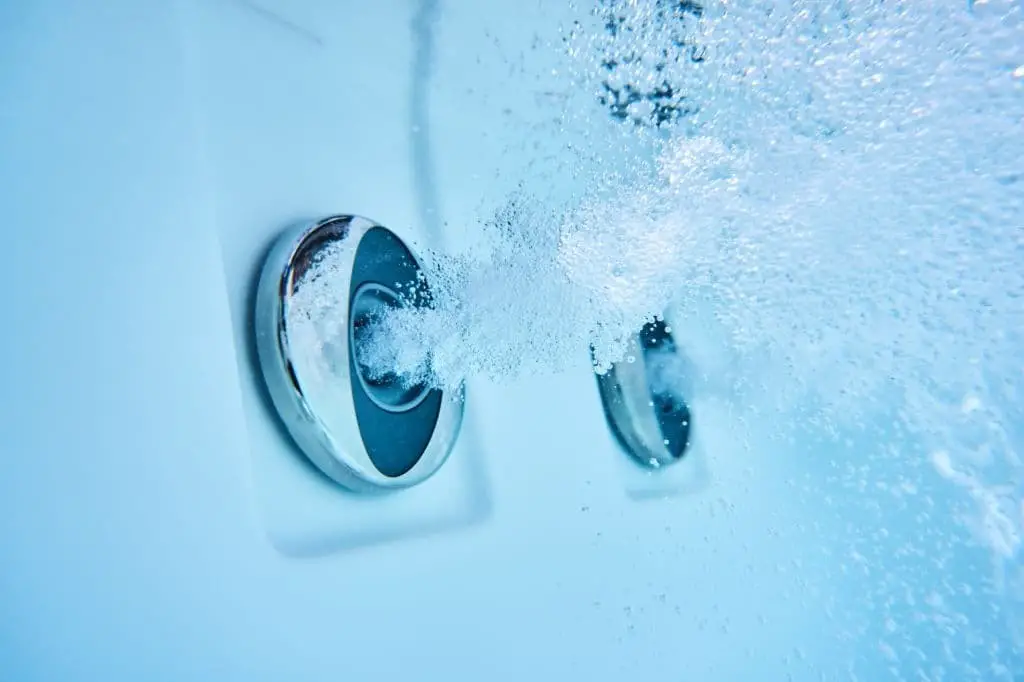
Immerse yourself in ultimate relaxation with the adjustable massaging jets, a hallmark feature of hydrotherapy in your hot tub. With customizable angles, you can tailor the warm water’s effects to your precise needs. Furthermore, regulate the speed and flow of the jets to achieve the perfect harmony for an unparalleled soaking experience.
Molded seats
Experience the pinnacle of hot tub relaxation with molded seats, designed to provide a customized lounging experience that promotes superior comfort and therapeutic benefits. The contoured design cradles your body, providing ample support for extended periods of soaking, while also offering a comfortable seating arrangement that’s perfect for solo or group hydrotherapy sessions.
Pop-up speakers
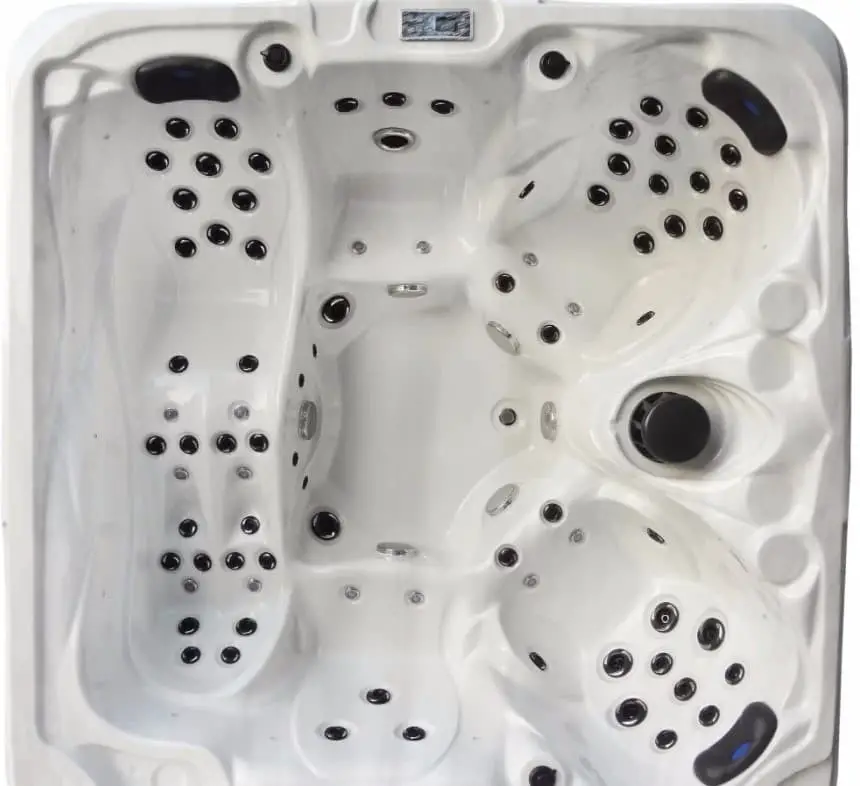
There’s something truly special about relaxing in a warm bath as your favorite song fills the air. While external speakers placed around the hot tub area can be tempting, they do pose a risk due to electrical concerns. A hot tub with integrated speakers, on the other hand, offers a more seamless and safe experience.
Salt water compatible
While traditional hot tubs rely on chlorine for sanitation and hygiene, many enthusiasts argue that salt water systems offer superior benefits for both health and wellness. The therapeutic properties of salt water are well-documented, providing relief from muscle aches, joint pains, and soreness. As such, the added expense of converting to a salt water-compatible hot tub may be a worthwhile investment for those seeking holistic relaxation experiences.
Water treatment system
Hydrotherapy benefits from having an effective water treatment system integrated into the hot tub. This setup helps alleviate issues such as muscle cramps, joint pains and body aches. Interestingly, prolonged exposure to hard water can lead to skin problems and dehydration, which may seem counterintuitive.
Furthermore, using untreated hard water in the hot tub for extended periods can also compromise its longevity, highlighting the importance of incorporating a built-in water treatment system to maintain optimal tub performance.
Waterfalls
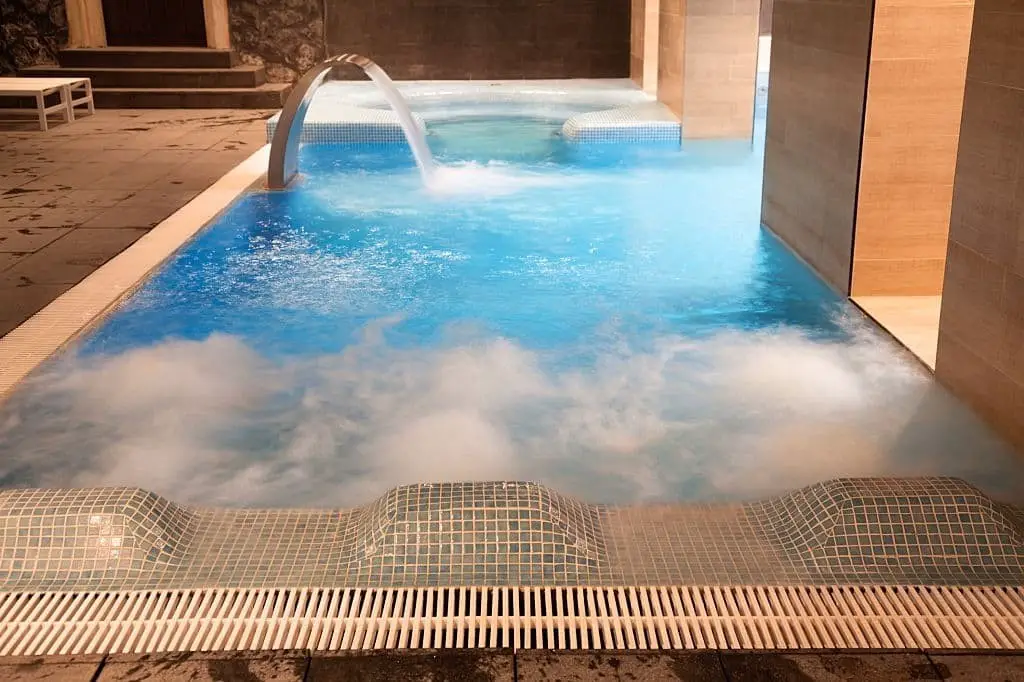
If you’re looking to elevate your hot tub experience to new heights, consider investing in a waterfall installation. This luxury upgrade can transform a self-contained hot tub into a serene oasis, complete with a breathtaking view, soothing water sounds, and the deep soaking benefits of a traditional hot tub.
While this customization does come at a higher cost, the end result is well worth the investment for those seeking to create a truly unique and rejuvenating spa-like atmosphere in their own backyard.
Hot tub shapes
When selecting a hot tub, the shape plays a crucial role in determining its compatibility with the surrounding space. The size and layout of the area where the hot tub will be placed, the number of users it can comfortably accommodate at once, and the types of features that can be added all depend on the shape of the hot tub. For instance, a more compact or square-shaped hot tub may fit snugly in a smaller backyard, while a larger or oval-shaped one might require a more expansive outdoor space.
The choice of shape also affects the overall user experience, with some shapes offering better water circulation or more room for relaxation.
Circular
When it comes to hot tubs, Amazon offers a range of options that cater to different needs and preferences. Among them, circular hot tubs have proven to be a popular alternative to traditional square models. Not only do they offer more affordable installation options, but their compact footprint and portability make them an attractive choice for those seeking a space-saving solution.
Moreover, if you’re looking for a more intimate experience for 1-3 people, circular hot tubs are an excellent option.
Triangular
Amazon shoppers may encounter the triangular hot tub, an unconventional shape that’s less common due to its unique fit. The angled design presents installation challenges, but it can be a viable option for those with limited space or seeking a compact corner hot tub setup.
Square
When it comes to shopping on Amazon, traditional hot tub shapes often reign supreme. This is largely due to their practical benefits and aesthetic appeal. For instance, these classic designs are well-suited for larger hot tubs that can accommodate more people, making them ideal for social gatherings or family use. Additionally, their symmetrical shape allows for a seamless fit into any corner of the home, effortlessly blending with the surrounding decor.
Perhaps most importantly, traditional hot tub shapes lend an organic look to the overall area, creating a cozy and inviting atmosphere.
Rectangular
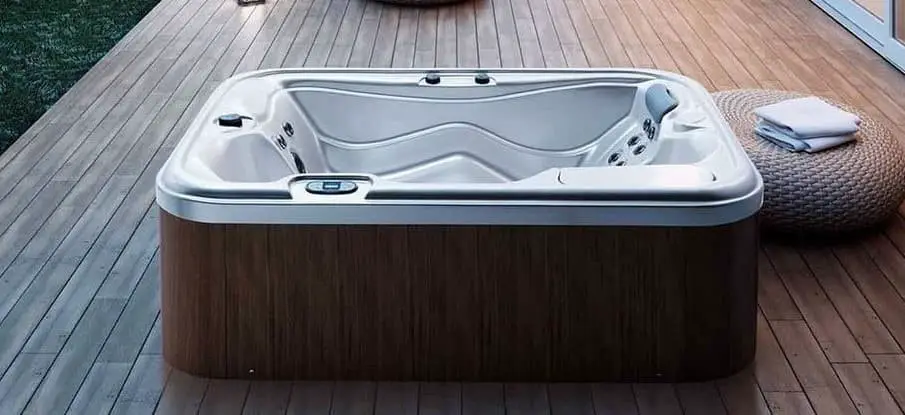
When it comes to accommodating larger groups or providing a more immersive soaking experience, a rectangular hot tub is an excellent option to consider. Not only does this design cater to the needs of taller individuals seeking a deeper soak, but it also offers a more spacious environment compared to self-contained tubs. This added roominess can be particularly beneficial for those who crave a more relaxed and rejuvenating experience.
Energy rating or voltage
While many people focus on the initial purchase price when buying a hot tub, it’s equally important to consider its energy efficiency. In reality, most hot tubs come with only two primary energy ratings that homeowners should keep in mind: these two ratings are crucial in determining how much energy your hot tub will consume and subsequently impact your utility bills.
110v
One of the simplest voltage options is 110V, which aligns with the standard voltage found in most sockets. This setup requires minimal electrical work, making it a convenient choice for hot tub owners seeking a quick and effortless installation experience. With 110V hot tubs, you can enjoy instant soaking pleasure without the hassle of elaborate electrical installations.
240v
While it’s logical to consider a higher voltage for hot tubs featuring unique amenities, it’s essential to note that 240V models often necessitate professional installation due to the increased complexity of electric setups. However, the primary advantage of these higher-voltage hot tubs lies in their faster heating capabilities rather than any perceived increase in jet power. In reality, the latter remains unchanged.
Occupancy
A hot tub’s capacity to hold individuals directly impacts its intended use – whether it’s for leisurely soaking, therapeutic purposes, or a combination of both. Moreover, this crucial factor influences not only the selection of the hot tub but also the designated space where it will be situated.
2-3 people
When it comes to hot tubs with a small footprint, 2-3 person models offer a compelling combination of operational efficiency and practicality. Not only do they provide the lowest operational costs compared to larger hot tubs, but they’re also surprisingly easy to maintain, manage, and clean. With minimal space requirements, these compact hot tubs are an ideal choice for those seeking a hassle-free soaking experience.
4-5 people
Surprisingly, industry experts recommend 4-5 person hot tubs as ideal for family or group use. While these larger models do occupy more space and may not be the most budget-friendly options, they do provide a cozy atmosphere for socializing. However, one drawback to consider is the increased time it takes to warm up the water due to their size.
6-7 people
This particular model is commonly regarded as a spacious accommodation option for hosting jacuzzi parties and catering to larger families. If you’re considering this hot tub setup for your own home, it’s essential to allocate sufficient space for the hot tub itself. Nevertheless, be prepared to factor in higher operating costs, including increased demands on water supply and energy consumption.
8+ people
While larger hot tubs can provide ample space for relaxation, they also come with significant upfront costs, installation expenses, and maintenance requirements. For families or households with a large number of occupants, this might be a viable option. However, for smaller households consisting of 2-5 individuals, the added space may not justify the substantial investment, making it an impractical choice.
Location
Before selecting a location for your hot tub installation, it’s essential to consider several factors. When deciding between indoor and outdoor options, keep in mind that both have their pros and cons. For instance, an indoor hot tub can provide year-round use and be easily integrated into your home’s décor. However, it may require more complex plumbing and electrical work.
On the other hand, an outdoor hot tub offers a unique connection with nature and can be a stunning focal point for your yard. Nonetheless, it may need to withstand various weather conditions and require additional maintenance to ensure its longevity.
Outside
Outside hot tubs, often referred to as outdoor whirlpools, offer a unique experience for those who want to unwind amidst nature’s serenity. These installations can be in-ground, situated in the yard, on a deck or porch, and are typically portable, allowing for effortless relocation. Powered by exterior electrical sources, they provide an inviting ambiance that seamlessly integrates with the surrounding environment.
Inside
In the quest for relaxation and rejuvenation, many homeowners opt for alternative solutions to traditional bathtubs or whirlpools. A prime contender is the indoor hot tub, which offers unparalleled versatility and accessibility. Unlike its counterparts, indoor hot tubs can be easily installed with accessible electric sources, making setup a breeze. Moreover, their customizable nature allows homeowners to tailor their spa experience to suit their unique preferences.
What are the benefits of hot tubs?
Hot tubs have gained a reputation as valuable home investments, and it’s easy to see why. They offer numerous benefits that make them an excellent addition to both indoor and outdoor spaces. By providing a therapeutic and relaxing environment, hot tubs can significantly impact overall well-being. One of the most notable advantages is stress relief.
The warm water, combined with features like massage jets and saltwater treatment, helps ease muscle tension, joint pain, and body aches, promoting a sense of calm and relaxation. This, in turn, leads to improved sleep quality, as a 2012 study found that hot tub use can help treat fibromyalgia in females aged 30-70. Hot tubs also offer hydrotherapy benefits for those with mobility issues or conditions like arthritis.
The warm water helps relax muscles, ease pain, and promote blood flow, making them an effective treatment option. In addition to stress relief and hydrotherapy, hot tub use has been linked to improved cardiovascular health. The relaxing effects of the warm water help lower blood pressure and stabilize heart rate, making it an attractive option for those with hypertension. Furthermore, hot tubs have been shown to improve sensitivity to insulin, helping to manage diabetes symptoms.
This is achieved through regular warm baths, deep soaking, or saunas, which can dramatically improve insulin sensitivity. Finally, hot tub use has been found to burn calories at a rate similar to a 30-minute walk. While it’s not a substitute for exercise, this finding highlights the potential benefits of hot tubs in improving metabolism and overall health.
Who should avoid hot tubs?
While we’ve touted the benefits of owning a hot tub, it’s essential to recognize that they’re not suitable for everyone. Certain health conditions or situations may warrant caution or even contraindicate use altogether. Some of these situations include: individuals with chronic heart disease, pregnant women, those suffering from skin injuries, people with low blood pressure, and anyone experiencing urinary tract infections (UTIs).
How to benefit from using the hot tub
When it comes to using a hot tub, it’s not just about indulging in relaxation – it’s also about being mindful of your body’s limitations. To maximize the benefits and minimize any potential risks, consider these basic guidelines: Firstly, be aware of the temperature. It’s essential to keep the water at a comfortable 104F or below, as anything hotter can cause skin injuries. Staying hydrated is crucial when soaking in a hot tub for extended periods.
This can help prevent dehydration and ensure you don’t experience any discomfort during your relaxation time. To avoid discomfort and potential harm, limit your hot tub sessions to 20 minutes initially, especially if you’re new to using one. If you start to feel lightheaded, short of breath, or experience skin redness or nausea, it’s time to get out immediately. Finally, don’t forget to wash yourself thoroughly with soap and warm water after your hot tub session.
Avoid jumping into a cold pool or washing off in cold water, as this can cause blood pressure spikes.
Where to buy a hot tub online?
For those who prefer the convenience of online shopping, we’ve compiled a list of reputable online stores offering high-quality hot tubs. These top-notch retailers offer a wide range of options to suit various tastes and preferences.
Some notable online stores to consider include Bullfrog Spas, Cal Spa, Caldera Spas, Catalina Spas, Hot Spring, Jacuzzi, Marquis Spas, Master Spas, PDC Spa, Sundance Spas, ThermoSpas, and Watkins Wellness.
These brands are well-established in the market and offer a variety of models to choose from, ensuring you find the perfect hot tub for your relaxation needs.
Conclusion
When selecting a hot tub for your home, it’s crucial to consider multiple factors. Beyond the type and features you desire, you should also have a clear understanding of your budget and available space. To make an informed decision, ask yourself key questions like how you’ll use the hot tub, how many people will be using it, and how frequently it’ll be used. By considering these elements, you can find the perfect hot tub for your needs.
Despite the initial investment, hot tubs can also provide a valuable return on investment if properly maintained, boosting your home’s resale value.




